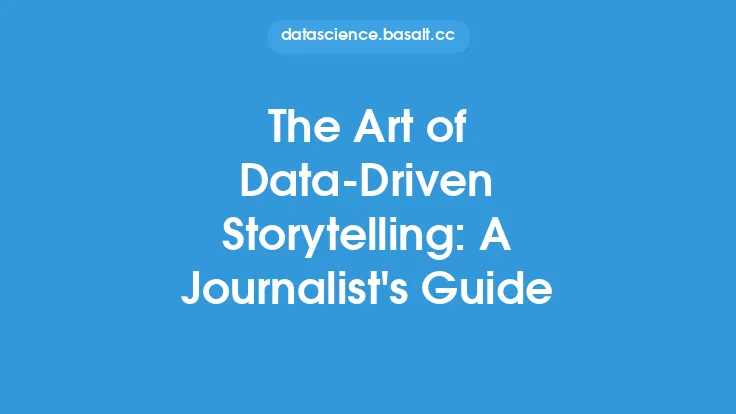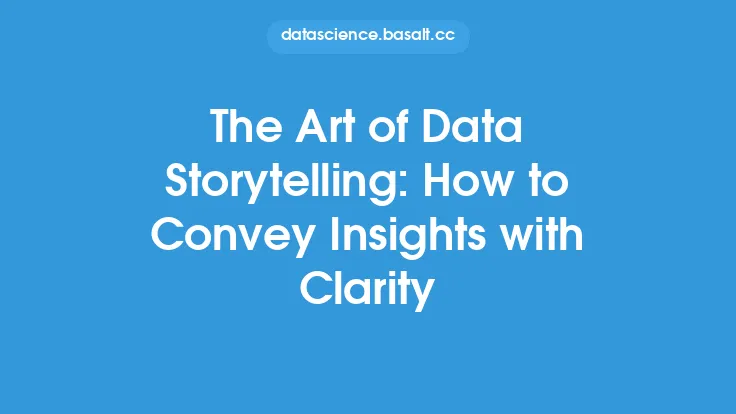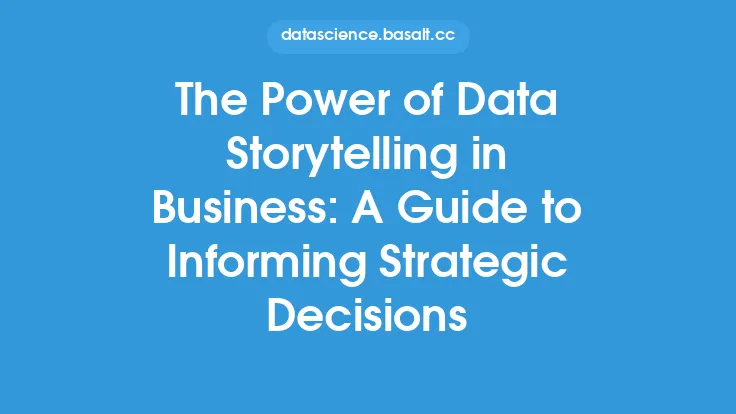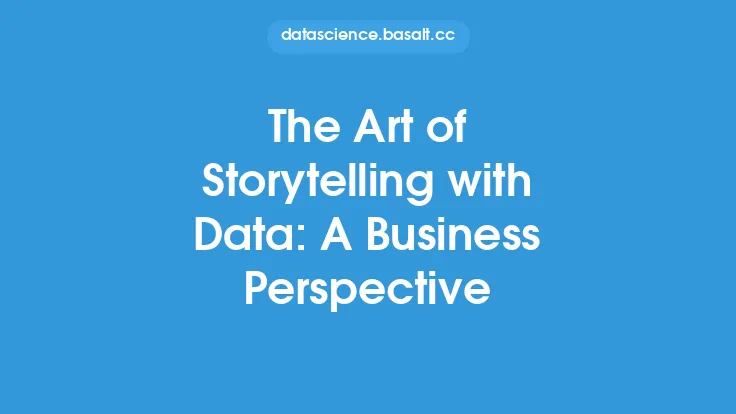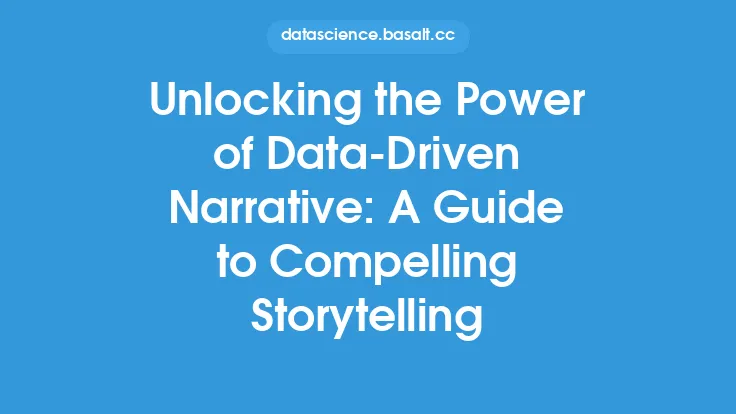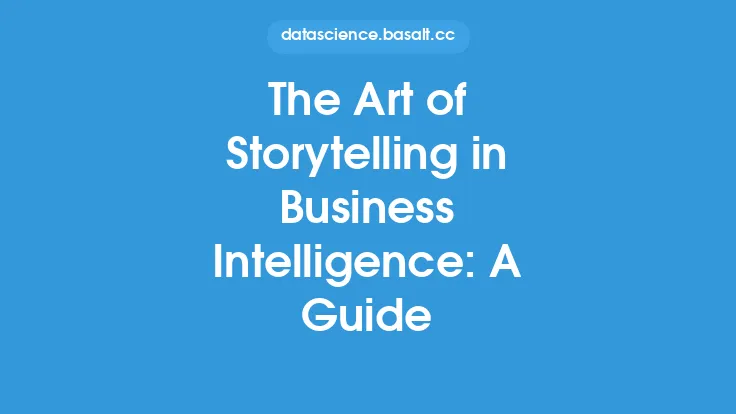Data storytelling is a crucial aspect of data presentation, as it enables individuals to effectively communicate insights and trends found in data to both technical and non-technical audiences. The goal of data storytelling is to present complex data in a clear and concise manner, allowing stakeholders to make informed decisions based on the insights gained. To achieve this, it is essential to understand the principles of data storytelling and how to apply them in various contexts.
Introduction to Data Storytelling
Data storytelling involves using narrative techniques to convey the significance and relevance of data insights. This approach helps to create a connection between the data and the audience, making it more relatable and memorable. A well-crafted data story can facilitate a deeper understanding of the data, encourage engagement, and ultimately drive action. The key elements of data storytelling include a clear narrative, relevant data visualizations, and a focus on the insights and recommendations that can be derived from the data.
Understanding the Audience
To create an effective data story, it is vital to understand the target audience and tailor the presentation accordingly. This involves considering the audience's level of technical expertise, their interests, and the decisions they need to make based on the data insights. For example, a presentation for a technical audience may delve into the details of data modeling and statistical analysis, while a presentation for a non-technical audience may focus on the key findings and implications. By understanding the audience's needs and preferences, data storytellers can create a presentation that resonates with them and addresses their concerns.
Crafting a Compelling Narrative
A compelling narrative is the foundation of a successful data story. This involves creating a clear and concise storyline that highlights the key insights and trends found in the data. The narrative should be structured in a logical and coherent manner, with a clear beginning, middle, and end. It should also be engaging and interactive, using techniques such as anecdotes, examples, and visualizations to illustrate the points being made. Additionally, the narrative should be focused on the insights and recommendations that can be derived from the data, rather than just presenting the data itself.
Selecting Relevant Data Visualizations
Data visualizations are a critical component of data storytelling, as they help to illustrate complex data insights in a clear and concise manner. The selection of data visualizations depends on the type of data being presented, the audience, and the key insights being communicated. Common data visualizations used in data storytelling include bar charts, line charts, scatter plots, and heat maps. Each visualization has its strengths and weaknesses, and the choice of visualization should be based on the specific needs of the presentation. For example, a bar chart may be used to compare categorical data, while a line chart may be used to show trends over time.
Using Interactive and Dynamic Visualizations
Interactive and dynamic visualizations can add an extra layer of depth and engagement to a data story. These visualizations allow the audience to explore the data in more detail, using techniques such as filtering, drill-down, and hover-over text. Interactive visualizations can be created using a variety of tools, including Tableau, Power BI, and D3.js. They can be used to present complex data in a more intuitive and user-friendly manner, facilitating a deeper understanding of the insights and trends found in the data.
Best Practices for Data Storytelling
To create an effective data story, there are several best practices that should be followed. These include keeping the presentation simple and concise, using clear and concise language, and avoiding technical jargon. The presentation should also be well-structured and easy to follow, with a clear narrative and relevant data visualizations. Additionally, the presentation should be engaging and interactive, using techniques such as anecdotes, examples, and visualizations to illustrate the points being made. By following these best practices, data storytellers can create a presentation that resonates with the audience and communicates the insights and trends found in the data.
Technical Considerations
From a technical perspective, data storytelling involves a range of skills and tools. These include data modeling and statistical analysis, data visualization and communication, and programming skills such as Python, R, and SQL. Data storytellers should also be familiar with data visualization tools such as Tableau, Power BI, and D3.js, as well as programming libraries such as Matplotlib and Seaborn. Additionally, data storytellers should be aware of the importance of data quality and integrity, ensuring that the data is accurate, complete, and consistent. By considering these technical aspects, data storytellers can create a presentation that is both informative and engaging.
Conclusion
Data storytelling is a powerful tool for communicating insights and trends found in data. By understanding the principles of data storytelling and applying them in various contexts, individuals can create presentations that resonate with their audience and drive action. The key elements of data storytelling include a clear narrative, relevant data visualizations, and a focus on the insights and recommendations that can be derived from the data. By following best practices and considering technical aspects, data storytellers can create presentations that are both informative and engaging, facilitating a deeper understanding of the data and encouraging informed decision-making.
